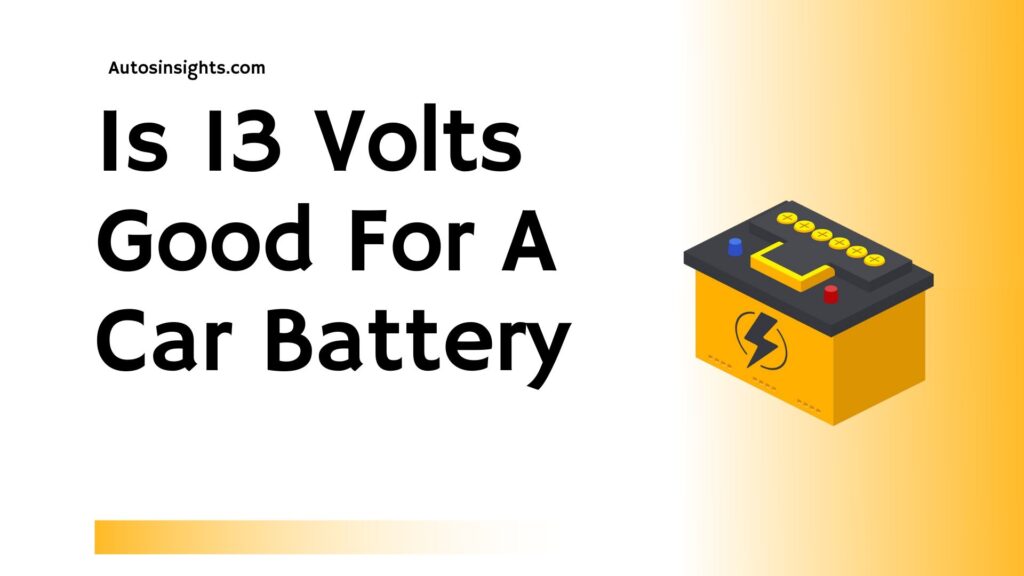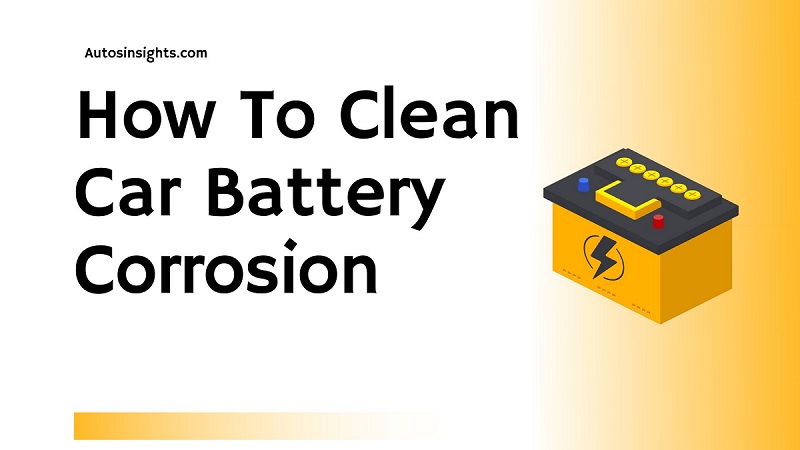Are you considering driving your car and still worrying about the car battery?
Let’s find out does driving charges your car battery or not?
Does Driving charge your car battery Detail Guide?
Yes, when your are driving your car, the Alternator is charging the battery. Most batteries provide power to the starter motor, which starts the engine. It also provides power to the electrical accessories, such as the lights, radio and windscreen wipers.

Once the engine is running, the Alternator takes over and provides power to all of these things. The battery charger only needs to be replaced if it can’t hold a charge or if the car battery leaks.
You should have a car battery charging device that can help you test it regularly and ensure it’s in good condition. If you find that your battery isn’t holding a charge, there are a few things you can do to try and fix the problem.
First, check the terminals and make sure they’re clean and corrosion-free. Next, check the fluid level and top up if necessary. Finally, have the battery tested by a professional to see if it needs to be replaced.
How Many Volts in a Fully Charged Car Battery?
Does driving an electric car impact battery charges, and if so, how many volts make a battery charged?
We all know that our car batteries must be regularly charged to keep them running properly. Still, many of us need to learn the answer to these important questions.
As it turns out, the amount of voltage in a car’s battery Does indeed change based on how much it’s being used.
When a battery is manufactured due to electrical power, it typically has 12 volts of electricity. However, as the battery is used and recharged, that number can fluctuate anywhere from 11 to 14 volts. So, suppose you’re wondering how many volts are in a fully charged car battery. In that case, the answer is between 11 and 14, depending on age and usage.
Now that you know Does driving charges your car battery and how many volts are in a fully charged one, you can make sure to properly care for your vehicle’s battery!
What is a flat car battery?
A flat car battery is a battery that is not holding a charge. This can be caused by things like leaving the lights on or not driving the car regularly.
If your car battery is flat, you will need to get a car battery recharge before you can use the car again. The best way to do this is to hook up the car battery to a charger or jump-start the car.
How Much Driving to Fully Charge a Battery?
On short journeys, does driving charge your car battery? Yes, driving your car charges the battery. The Alternator recharges while the engine is running. Many factors are to be kept into account; let’s find out:
- Does idling charge your car battery? No, idling does not charge your car battery. The Alternator does not recharge the battery while the engine is idling.
- Does turning off the engine and starting it again charge your car battery? Turning off the Engine and starting it again does not charge your car battery.
- The Alternator only recharges the battery while the engine is running. Does plugging in a charger charge your car battery? Yes, plugging in a charger will charge your car battery.
- Does revving the engine charge your car battery? Yes, revving the engine will charge your car battery. The Alternator recharges the battery when the engine is running at high speeds.
- Does driving fast charge your car battery? Yes, driving fast will charge your car battery. The Alternator recharges the battery when the engine is running at high speeds.
- Does braking charge your car Battery? No, braking does not charge your Car Battery. The Alternator only recharges the battery while the engine is running.
- Does the accelerator pedal charge your car Battery? No, the accelerator pedal does not charge your Car Battery. The Alternator only recharges the battery while the engine is running.
Do Car Batteries Charge While Idling?
Does Driving charge your car battery when the engine running? Yes, but it takes a long time. If you’re driving for an hour and your headlights begin to dim, it’s a sign that your battery isn’t being charged.
The Alternator is responsible for providing power to the electrical system while the engine is running, including to a fully charged Battery.
When the engine is running, there needs to be more power being generated to charge the battery adequately. It would take hours of idling to give the battery a significant boost.
And, if the engine is having trouble starting, idling won’t help – it’ll drain the battery further. If you find yourself with a dead battery, it’s best to call a tow truck or roadside assistance.
They can jump-start your car and get you back on the road quickly. It would be best if you read more about the following for modern cars and vehicle starters:
- Trickle charger
- Ac compressor
- Voltage regulator
- Fuel economy
- Charging system
- Flat battery and faulty battery
How Long Does a Car Battery Last Without Driving?
A car battery is essential for your car, providing power to start the engine and run the electrical system. However, many drivers are still determining how long a car battery will last without being used.
The truth is that older car batteries can last for several months without being driven. Still, there are a few factors that can affect their longevity.
First, the type of battery plays a role in how long it will last without being used. Lead-acid batteries, for instance, tend to have a shorter shelf life than lithium-ion batteries.
Additionally, the age of the battery also plays a role in how long it will last; newer batteries typically have a longer lifespan than older ones.
Finally, exposure to extreme temperatures can shorten a battery’s lifespan, so storing them in a cool, dry place is important. With proper care and storage, a car battery can last for several months without being used.
What are the Different Types of Battery Chargers?
Several battery chargers are available on the market today, each designed for a specific purpose.
The standard charger is the most common type, which is used to charge lead-acid batteries. These chargers typically have a built-in overcharge protection function, making them safe for all batteries.
Another popular type of charger is the automatic charger, which is designed for use with NiCad batteries.
These chargers automatically shut off when the battery is fully charged, preventing overcharging and prolonging the life of the battery.
Chargers are also available for use with lithium-ion batteries, which require a different charging protocol than other types of batteries. These chargers typically have an adjustable voltage setting to be used with different types of lithium-ion batteries.
Finally, solar-powered chargers are also available, ideal for use in remote locations with limited AC power.
Solar-powered chargers harness the sun’s power to generate electricity, which can then be used to charge batteries.
Solar-powered chargers are typically more expensive than other chargers. Still, they are an excellent choice for those who want to go green and reduce their reliance on fossil fuels.
Best Way for battery charger While Driving
When your car battery dies, it can be a real pain. Not only do you have to call a tow truck, but you also have to pay for a new battery.
If you’re lucky, you might have a friend or family member who can give you a jump start. But what if you’re in a situation with no one to help? Can a car battery be charged while driving?
Yes, it is possible to charge a vehicle battery while driving. However, it’s more complex than just hooking up a charger and letting it do its thing.
There are a few things that you need to take into consideration before you start trying to charge your car battery while driving. First, you need to ensure that your Alternator is working properly.
If it’s, then charging your Battery while Driving will do little. Second, you need to ensure that your battery is compatible with the charger you’re using.
Otherwise, you could damage your battery or even cause an explosion.
Finally, it would be best if you were careful not to overload your electrical system by charging your battery too quickly.
Charging your car battery while Driving is definitely possible, but it’s not something that should be attempted lightly.
Make sure you know what you’re doing and take all the necessary precautions before plugging in your charger.
What kind of car battery charger do I need?
Several car battery chargers are on the market, each designed for a specific purpose.
The standard charger is the most common type, which is used to charge lead-acid batteries. These chargers typically have a built-in overcharge protection function, making them safe for all batteries.
Another popular type of charger is the automatic charger, which is designed for use with NiCad batteries.
These chargers automatically shut off when the battery is fully charged, preventing overcharging and prolonging the life of the battery.
Chargers are also available for use with lithium-ion batteries, which require a different charging protocol than other types of batteries.
These chargers typically have an adjustable voltage setting to be used with different types of lithium-ion batteries. Finally, solar-powered chargers are also available, ideal for use in remote locations with limited AC power.
Solar-powered chargers harness the sun’s power to generate electricity, which can then be used to charge batteries.
Solar-powered chargers are typically more expensive than other chargers. Still, they are an excellent choice for those who want to go green and reduce their reliance on fossil fuels.
What does a car’s Alternator do?
The vehicle alternator is an important part of a car’s electrical system, as it provides power to the battery and powers the car’s electrical components while the engine is running.
The Alternator is belt-driven and is located at the front of the engine, usually on the passenger side. When the engine is running, the Alternator charges the battery and powers the car’s electrical accessories.
If the Alternator fails, the battery will eventually run out of power, and the car will stall.
Recharge car battery
If your vehicle battery has died, you can recharge it by hooking it up to a charger or jump-starting the car. To hook up a charger, connect the positive and negative cables from the charger to the corresponding terminals on the battery.
Once the connection is made, please turn on the charger and let it run until the battery is fully charged.
If you’re jump-starting the car, you’ll need to connect the positive cable from the jumper cables to the positive terminal on the battery and then connect the negative cable to a metal ground on the car. Once the connection is made, start the car with the good battery and let it run for thirty minutes.





